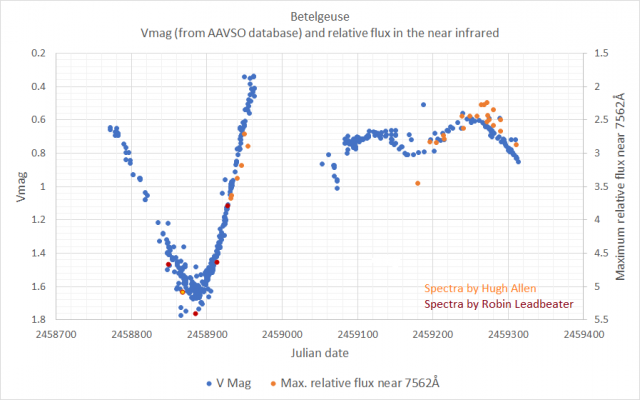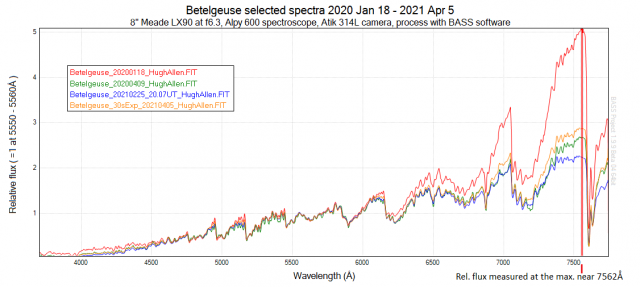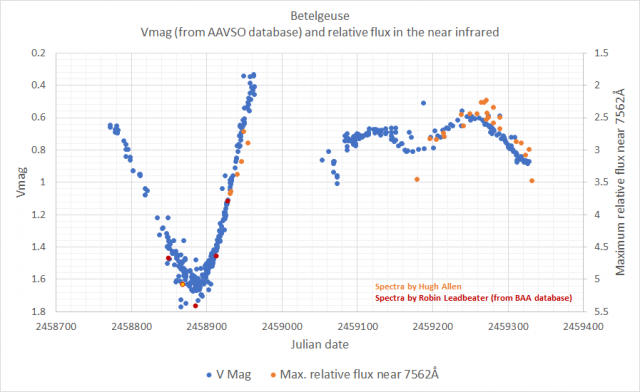› Forums › Spectroscopy › Is Betelgeuse heading for another deep fade?
- This topic has 1 reply, 1 voice, and was last updated 4 years, 8 months ago by
 Hugh Allen.
Hugh Allen.
-
AuthorPosts
-
11 April 2021 at 3:21 pm #574942
 Hugh AllenParticipant
Hugh AllenParticipantUsing my Alpy 600 spectroscope I’ve been monitoring the spectrum of Betelgeuse, in particular for changes in relative flux in the near infrared (NIR):

The deep fade in early 2020 was much commented on in a previous thread in this forum https://britastro.org/node/20235 and Dr Mark Kidger predicted that it could repeat in April this year (see the Variable Star Section Circular 186 https://britastro.org/vss/VSSC186.pdf ). The recent changes in my NIR relative flux measurements and the Vmag data from the AAVSO database both suggest that another fade may be on the way – such a shame that Betelegeuse will shortly disappear into the encroaching twilight! The correlation between Vmag and NIR relative flux suggests that the last deep fade, and this possible approaching new one, are not ‘grey’ fades caused by a solid object blocking some of the starlight from view. Instead the fade may be due to dust or surface temperature change both of which would cause the observed relative brightening in the NIR.
The relative flux measurements are made at the maximum that occurs in the spectrum near 7562Å, after normalising the spectrum at 5550-5560Å which is near the midpoint of the Vmag filter. All of the spectra are in the BAA Spectroscopy database but here are some examples from across the time range:

Essentially I’m measuring the shape of the spectrum and find a repeatability on any given night of about 10%. This shape is dependent on the response correction for atmospheric effects and it is therefore also dependent on the reference star chosen to generate this response correction. I chose the reference star SAO 112849 (32 Ori) to generate a response curve using the B57V Pickles reference spectrum. The reproducibility of the relative flux by other Alpy 600 observers would I think depend on using the same response correction procedure, and of course the same normalisation at 5550 – 5560Å
Cheers
Hugh
27 April 2021 at 11:00 pm #584131 Hugh AllenParticipant
Hugh AllenParticipantBetelgeuse is disappearing into the twilight but it’s still possible to get good spectra. I captured my latest spectrum yesterday evening with the star just 19deg above the western horizon. The relative brightness in the near infrared is continuing to increase…

-
AuthorPosts
- You must be logged in to reply to this topic.
